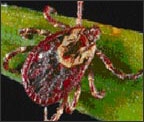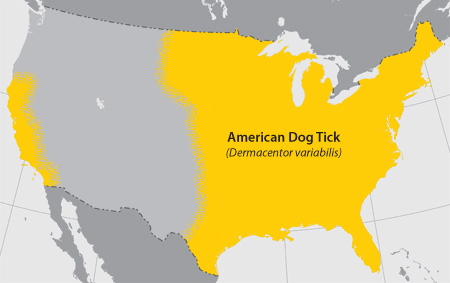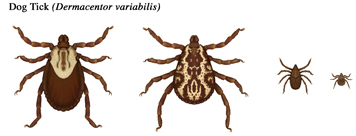The American Dog Tick (Dermacentor variabilis)
The American dog tick is capable of transmitting the pathogens that cause Rocky Mountain spotted fever (RMSF) and Tularemia. RMSF and Tularemia are both serious diseases and require swift medical attention.

Dog ticks are easily distinguished by their large size and ornately colored dorsal shield. They have white/silver marking covering the shield and festoons along the edge of the abdomen. Dog ticks also have small, hexagonal mouthparts which are noticeably different from the mouthparts of other common tick species.

The American dog tick can be found ubiquitously throughout areas east of the Rocky Mountains and along a small section of the west coast. Typical American dog tick habitat includes woods, brush, and tall grasses. American dog ticks have similar life cycles as the deer tick. Larvae and nymphs usually feed on small mammals, like rodents, and adults prefer larger mammals like dogs.

Sizes of the dog tick's various life stage. From left to right: adult female, adult male, nymph, larva.
